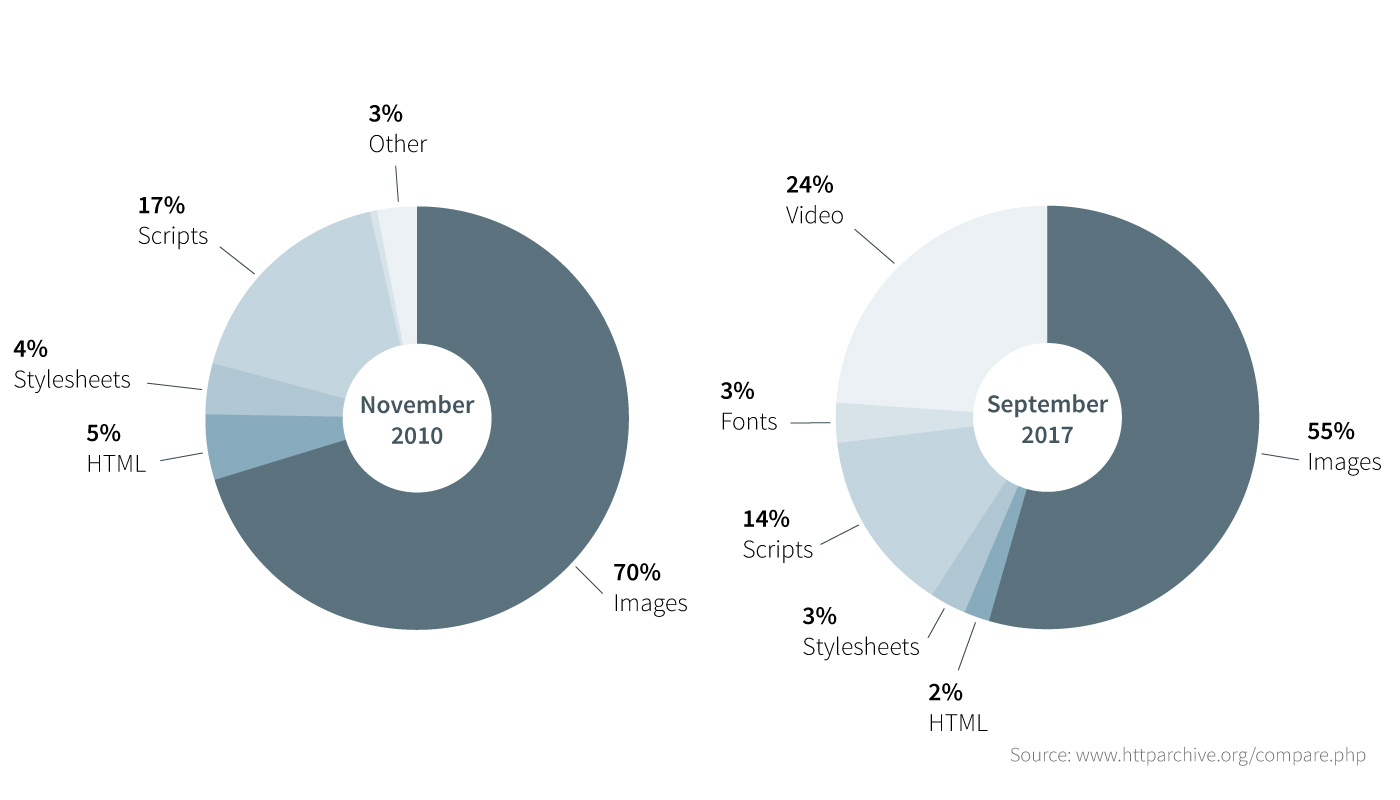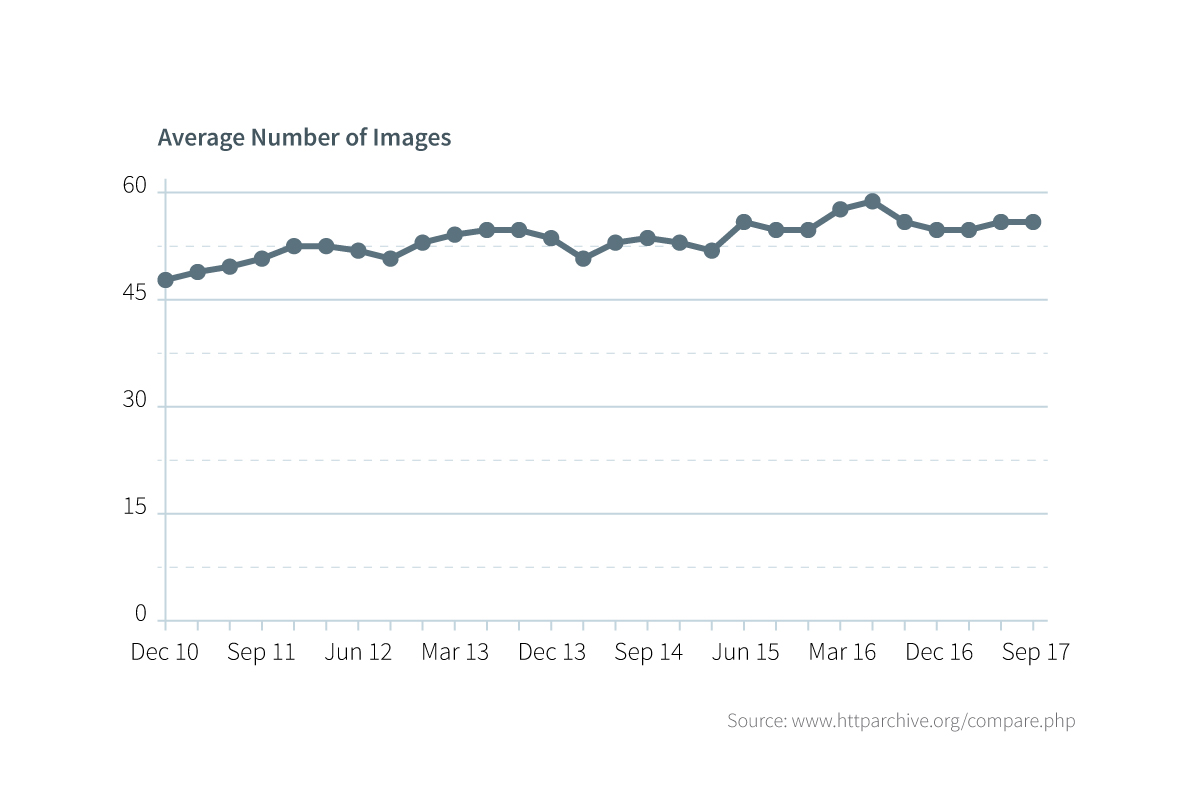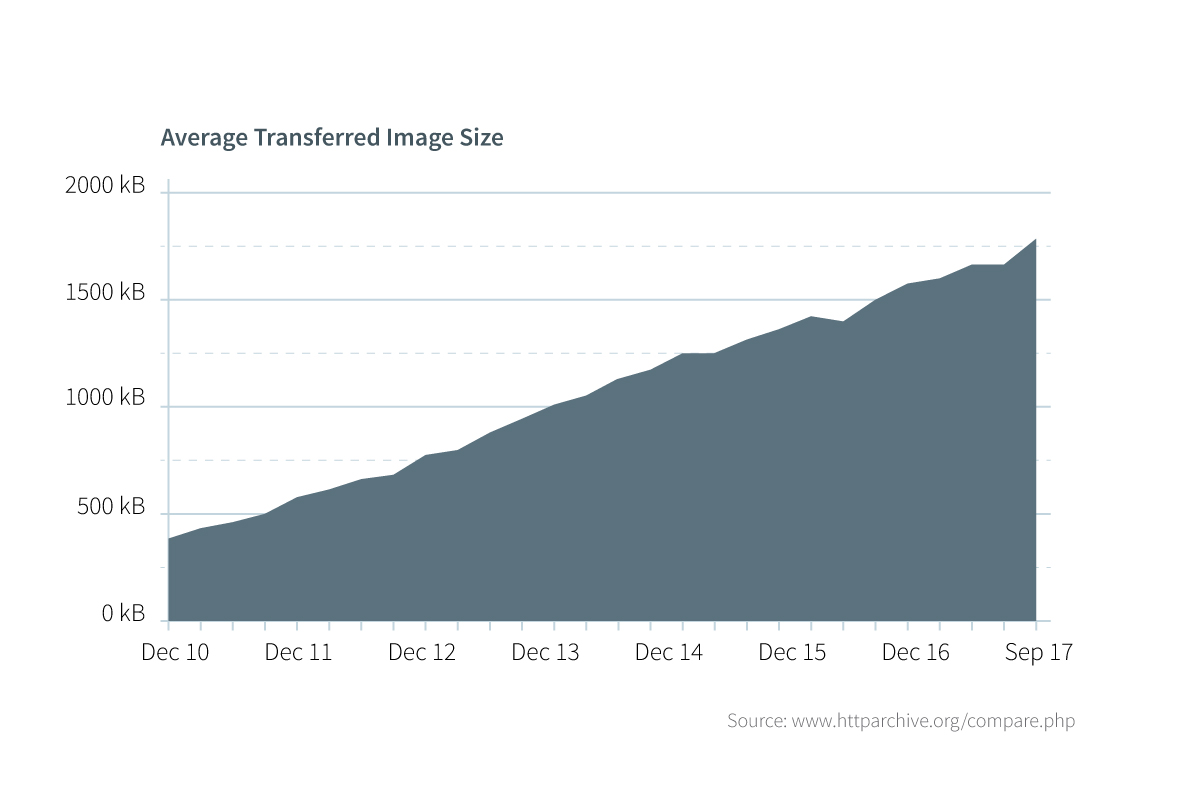The average web page is far larger in size and more complex in its programming than it has ever been before. Today, businesses across all industries are using images, video and interactive capabilities more and more to help create better user experiences. In addition, there are countless types of devices being used to access the internet, creating a complex interface that changes the user experience from person to person.
Beyond the complexity of websites, individual web pages are steadily growing in size thanks to the many elements commonly used in each. These elements have increased the average total web page size from 702 KB in November 2010 to 3.3 MB in September 2017, according to HTTP Archive. This means that the average size has multiplied by approximately five times in seven years.
It isn’t just web pages increasing in size and devices multiplying in number that can cause such a wide disparity in user experience. More countries than ever have a large portion of their populations accessing the internet. However, the average bandwidth in each country can vary greatly, leading to even more variations in user experience. Differences in devices mean that navigation menus, text size, image placement, white space and more will change to suit the specific dimensions of various screens. In addition, the increasing size of web pages and large differences in bandwidth can cause sites to load slowly and frustrate visitors, or even fail to load various elements at all. Without great UX strategies that take these factors into account and plan for them through detailed programming, it can be difficult for companies to properly reach their target audiences.
As such, Liferay Adaptive Media has been created to address these needs and improve a company’s omnichannel strategy and behind-the-scenes performance.
Optimizing for Great User Experience
Video has made the largest gains in accounting for the size of web pages during the last seven years, with images still accounting for the majority of data, as seen in the charts below.

However, while video is taking up a great portion of data, images are accounting for more data than ever. As seen below, while the average number of images has stayed relatively the same across the years, the average image size is steadily increasing.

According to statistics from Kissmetrics, nearly half of web users expect a website to load in two seconds or less. Should the site not load in three seconds, then they are likely to abandon it. In addition, 79% of those polled said that they would not return again to a site with performance issues. These online factors influence the bottom line of every company and illustrate the importance of creating an online experience that performs well for a wide variety of users under many different circumstances.
As page data continues to grow, businesses must take steps to prevent complications from negatively affecting their user experience due to device specification, bandwidth and more, while still providing a pleasing modern user experience.

Taking Control of User Experience
A well-constructed user experience that conforms to the unique circumstances of users can benefit many different audiences. Liferay Adaptive Media can help:
- Portal Administrators: Define media resolutions that will be used to process and serve uploaded images according to the characteristics of the accessing device (screen size, bandwidth and processing capacity).
- Content Creators: Upload media and create new pages of content without needing to worry about their appearance being negatively impacted by varying screen sizes and devices, with Adaptive Media transparently working in the background.
- End Users: Enjoy an improved experience by consuming images that best fit to their devices and Internet connection.
- Developers: Easily integrate Adaptive Media in their apps to support different media qualities.
Improve Your UX with Liferay Adaptive Media
The Liferay Adaptive Media app help programmers combat the complications caused by large page sizes and variations in device layouts, with features including:
- Core integration with documents and media
- Optional integration with blogs and web content
- Compatibility layer removing the need to modify old content
- Resizing images stored in Liferay to certain image resolutions
- Reducing page size and improving loading speed based on device and bandwidth
- Applying these changes automatically to end users without individual programming
Adaptive Media helps Liferay DXP users create experiences that are tailored to their customers, wherever they are, regardless of device.
Improve User Experience with Liferay Adaptive Media
Learn More About Liferay Adaptive MediaSee how you can build a solution fit for your needs
Diamond Bar, CA 91765
USA
+1-877-LIFERAY